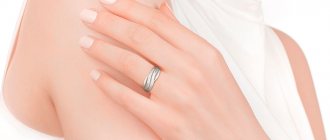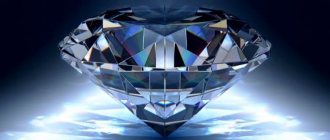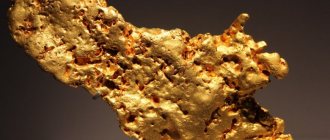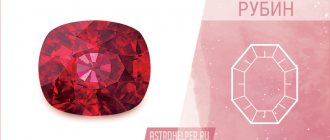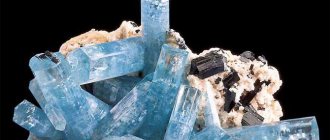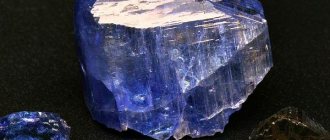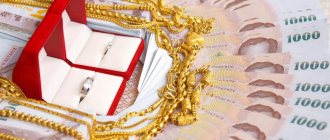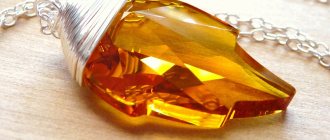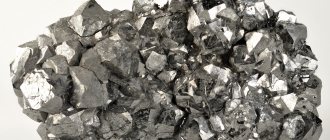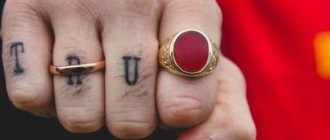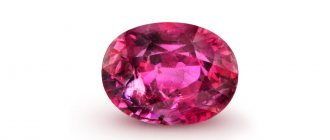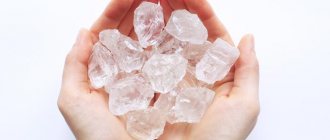Ruby is one of the most expensive precious minerals. Distinctive features are high hardness and transparency, bright red color. Because of its high price, the jewelry market is trying to sell gems of lower price or counterfeits. The most reliable way to check the authenticity of a stone is to contact a jeweler. However, when choosing jewelry, it is useful to know how to distinguish a ruby from a fake without resorting to the help of a specialist. Those who already have jewelry can check it themselves at home.
Ruby is the oldest stone
Ruby was the most popular stone in ancient India, where it was considered the king of gems. The Greeks and Romans also valued ruby, believing that this stone promoted victories and great deeds, so the palaces of rulers and their clothes were often decorated with ruby items.
In the countries of the East, the stone personified vital energy, and its owners were given love, strength and health. In Russia, this gem became popular in the 9th century and was called yakhont (like its “brother” sapphire). This stone was considered the best gem, capable of giving strength and a healing effect on the heart, and since “yakhontovy” was previously synonymous with the word “precious,” the expression “you are mine, yakhontovy” was introduced as an appeal to the dearest beloved.
Mining rubies - when will nature run out of stones?
Mining such stones is not an easy task; rubies are found in rock layers at considerable depth, and ruby deposits are gradually decreasing. Scientists have calculated. That in a thousand years a person will extract the last natural stone from the depths.
The highest quality and most expensive rubies are mined in Myanmar (formerly Burma); stones from this deposit are also called “pigeon blood” because, in addition to their blood-red color, they have a purple tint. Pigeon blood is also found in Vietnam.
The city of Mong Shu in India also boasts exceptional rubies, most of which are black with red edges. They are often even more expensive than pigeon blood because they are extremely rare. Almost the entire population of the city is engaged in crystal mining.
Each deposit produces its own stone, which varies in shade; the third largest deposit is in Ceylon, where rubies of a unique coral color are mined. Although they are not as sought after as blood red, their price is also high.
However, recent studies have shown that even in these layers very few crystals remain. The last stone will be mined soon, which may indicate a further increase in the price of this unique mineral.
Characteristics of natural rubies
Natural ruby is quite rare among other minerals, so an experienced jeweler can absolutely accurately distinguish a fake by the following characteristics.
The hardness of the crystal, ruby is second only to diamond in hardness, which makes it a class 1 stone - 9 points on the Mohs scale. With such a high hardness, the stone is very difficult to break and leave a scratch.
Due to its hardness, it can be easily processed by jewelers, and an experienced craftsman should be able to make clear edges from it.
Pink, coral and reddish-burgundy rubies are found in nature. Stones with black inclusions are also not uncommon.
The shine of rubies comes from the igneous origin of the mineral; natural stones shine very strongly in all shades of red.
Characteristics of real crystals
How to distinguish a natural ruby from an artificial one? Find out its signs and natural properties. The main indicators of the physical characteristics inherent in ruby:
- Increased hardness coefficient. The stone is one of the strongest minerals. The first hardness class explains its origin - magma rocks. Inferior to diamond crystals. How to test a mineral for strength? Drop. The ruby cannot be damaged; if it falls on a metal or glass surface, there will be no chips or scratches on the rock.
- Clarity of cut. Gems formed by the formation of magma can be recognized by their clear edges. There are no irregularities or bends on them. Density during processing allows you to change its shape. Craftsmen make smooth, regular cuts. The stone can be cut, as if wanting to find a new life under the hands of a jeweler.
- Color variety. You can identify a ruby by learning what colors real rocks can have. Ruby is red. The shades of the crystals are different, but they all differ only in saturation. The main color is red: pink, dark, burgundy. Sometimes natural samples combine several shades, resulting in transferable overflows, transitions and fusions of different shades.
- A must for shine. It is recommended to identify a real ruby by its brilliance. It is strong, has a glossy effect, glare and allows the crystals to shine through.
- Glow. The difference between a natural ruby and an artificial one is the composition of the mineral. It contains chromium. The approximate amount of metal is 2%. Chrome creates a purple shimmer effect. You can notice it when turning the crystals. The glow is mesmerizing and helps you realize that you are holding a precious gem in your hands.
Ruby stone - properties
Nature has created dozens of red minerals. To find a precious ruby among other red stones, you need to know its properties.
Ruby is a type of corundum, an aluminum oxide that is very hard and very durable. Rubies can be identified by their deep red color, which leans towards purple, dark pink and may have black undertones or reflections.
In addition to color, these stones are distinguished from glass and other minerals by their intense shine, similar to that of a diamond.
Who is it suitable for?
The mineral is suitable for people who have lost confidence in themselves and their own abilities.
It guides a person to make the right decision. Corundum should not be given or worn to people who are filled with envy, anger, and negative thoughts. Otherwise, the mineral will reflect these feelings in the opposite direction and increase their influence.
Astrologers say that the mineral is perfect for people born under the zodiac sign Cancer. In turn, it is absolutely contraindicated for Aries, Leo and Capricorn.
How to determine whether a ruby is natural or not
Distinguishing a real ruby from a similar colored mineral such as garnet, tourmaline or precious spinel is truly difficult. Reliable methods for determining the authenticity of a ruby only emerged in the mid-19th century with the development of mineralogy, after which it was discovered that many famous scarlet gems, including those in crowned heads, were not rubies, but tourmalines or spinels, which were mined in Indochina.
Determining its syngony, lattice group, isotropic and anisotropic properties is the key to determining its authenticity. Ruby has light anisotropy (in the optical region) and these properties cannot be tested at home, but properties such as low heat capacity (slow heating) can.
Practical advice
These verification methods can be carried out both at home and in the store itself, when purchasing jewelry:
- You can find out whether the stone you are purchasing is genuine using an empty glass vessel. Even a glass will do. You need to lower the mineral into a vessel and, if you manage to notice a red glow emanating from the stone, then the person in front of you is not an artificial ruby, but a real one. Everything ingenious is simple!
- In natural light, the crystal will have, on the one hand, turned towards the sun, a characteristic burgundy color, and on the other, the shade will be matte and pale.
- When determining the original, use cow's milk. Pour it into a glass and place a stone there - the milk should take on a pink tint. This is explained by the high luminous intensity of the stone.
- Synthetic rubies differ from natural ones in that when the jewel is illuminated by ultraviolet light, the former will have a red glow, while the latter will have a bright orange glow.
- A ruby is distinguished from a fake by the presence of bubble inclusions. In artificial stones they will be empty, white, and in natural ones they will be filled with red gas bases.
- Mechanical damage - scratches on the crystal - will help check the authenticity. Unlike natural stone, scratches on artificial stone will be straight and glossy, but should be distorted and zigzag-shaped.
- Ruby, like diamond, slowly “absorbs” the temperature of the human body and slowly heats up. Just apply the mineral to your body and hold it there for a few minutes - if it heats up, then the person has a cheap one. Natural jewelry will differ from synthetically created jewelry in that it will not heat up at all.
- Any surface, be it glass or metal, will help you identify a real ruby. By running a natural crystal across it, you can leave a mark – a scratch.
- The weight of the stone will help verify the authenticity. A natural ruby has a fairly large weight, since corundum is a hard and heavy mineral, but an alloy fake will be light.
- To check, you can take a magnifying glass and shine the light on the stone over the lamp, examining it carefully. Rubies, which differ from their synthetic relatives, have smooth boundaries without a blurred section, but if the edges are blurred, then it is a fake made of glass, plastic or another less dense mineral.
- How else can you check if these methods are not enough to verify the authenticity? Just pay attention to the cost of the crystal - if it is prohibitively low, then it can hardly be considered a natural mineral.
Finally, I would like to say that an artificial ruby, as an element of decoration, is sometimes not so bad. Especially if it is made using Geneva technology. However, such stones still cannot replace real jewelry.
If these verification methods are not enough, then the purchased stone should be submitted for jewelry examination.
With all the knowledge of how to distinguish a fake from natural analogues, you can safely open an expert jewelry bureau yourself. Choose carefully!
How to obtain synthetic ruby
The first synthetic ruby was obtained by the French scientist Auguste Verneuil. This gave a great impetus to the production of the gemstone in large quantities for almost all countries. In addition, thanks to the scientist, other minerals began to be cultivated; The technology by which the first artificial crystal was obtained is the so-called Verneuil method. It consists of the following steps.
- The mixture of oxides is placed in a special hydrogen-oxygen burner (Verneuil furnace).
- Substances melt.
- When cooled, the droplets form a crystal.
The gemstone grows first in the shape of an expanding cone and then a cylinder, which is surprising, but with this method you can get a ruby in just a few hours. Currently, there are many different methods for obtaining synthetic ruby.
How are rubies counterfeited in the modern world?
In 1857, the French chemist Marc Gaudin managed to obtain an artificial stone through synthesis; he fused two salts - alum and potassium chromate, obtaining ruby crystals.
In 1896, French scientist Auguste Verneuil grew the first synthetic minerals. He made a specialized furnace with a hydrogen-oxygen burner for the synthesis of rubies. This method began to gain popularity, and the era of industrial production of synthetic jewelry stones began, which immediately swept across Europe.
Red stone - who besides ruby
In the jewelry industry, minerals such as precious spinel, red and pink tourmaline and garnet are used as substitutes for the rare gemstone red corundum ruby.
How to distinguish a ruby from a garnet
The easiest way to distinguish a natural garnet from a natural ruby is to look at its shine, which is much weaker in garnet.
Garnet is a different shade of red stone, with a tendency away from purple; the color is more consistent with old red wine.
Garnet is softer, up to 7.5 on the Mohs scale, has a different crystal lattice shape and has a resinous rather than glassy luster. In sunlight it has a dull shine, while red corundum shines brightly.
Garnet can be recognized by its magnetic property, which ruby does not have.
Differences between ruby and tourmaline and spinel
Tourmaline also bears a close resemblance to ruby, especially the inexpensive, bright red and pink ones. It has a rich pink color and the same glassy shine; When examining gemstones, tourmalines are sifted out by shining them under an ultraviolet lamp.
Ultraviolet light passing through tourmaline or other scarlet crystal produces an orange glow; passing through a ruby, it remains red. In the same way, you can distinguish a real ruby from a synthetic one.
The most difficult thing to distinguish a fake is when it comes to precious red spinel. It is impossible to do this yourself, since spinel has similar properties, but the difference with ruby is very small. To check the authenticity of a stone suspected of being spinel, you need to contact a jewelry laboratory. Spinel crystals have a strawberry hue, like some types of rubies.
If you have any doubts about the originality of a stone, especially if it is set with precious metals, it is best to consult a jeweler or local appraiser's office.
Difference from other gems and precious stones
The high cost of rubies encourages some sellers to deceive buyers using synthetic or less expensive crystals. And if artificial gems differ noticeably from a scarlet precious mineral, then it is more difficult to differentiate natural or grown ones.
Only a professional can distinguish a real ruby from an “impostor” with complete confidence, because there are a great many fakes:
- red tourmaline;
- Verneuil ruby;
- Geneva ruby - a fake made from crumbs of red corundum;
- sapphire;
- noble red spinel;
- tourmaline;
- quartz and others.
More often, another semi-precious mineral is used for imitation - garnet. It is difficult to recognize it without special training. Garnet is similar to the ruby stone, but it lacks the characteristic shine and is more fragile, for example, it can be scratched by glass. In addition, garnet has a magnetism effect. If you rub a real ruby on a woolen cloth, it will not attract small debris or lint.
Professional testing methods include crystal lattice analysis and assessment of physical properties. To distinguish ruby from tourmaline, the sample is illuminated with ultraviolet light. Tourmaline will have an orange sheen. This method also helps to weed out synthetic crystals.
Selecting a ruby from the abundance of fakes is not an easy task. Only a jeweler can guarantee authenticity. You should not purchase stones that are too cheap without accompanying documents confirming their authenticity.
Types of rubies
If you are looking for an answer to the question of how to distinguish a ruby, it is worth considering what types of stones nature has created. There are not many varieties.
Burmese. Named after the place of extraction, samples are found in Myanmar. The red color is very bright and saturated, the stone is quite expensive, so you can distinguish a ruby from a fake just by the price. High prices are set only for certified goods.
Ring with Burmese ruby and diamonds
Pigeon blood. Distinguished by the appearance of a purple glow, ruby is very valuable, its price is similar to diamonds, it is difficult to counterfeit the stone, you will have to combine several ingredients with metallic impurities, trying to preserve the special properties. These actions are practically impossible.
ruby pigeon blood
Star-shaped, the rarest type of crystal that can be found, the inner glow is similar in shape to a star, it is unlikely that even the most skilled craftsman will be able to reproduce such a miracle of nature.
Types of fakes
Most often, garnet becomes a substitute for ruby. It is a dull dark red silicate mineral. It is easy to distinguish a ruby from a garnet. Place the stone in sunlight or place it under a lamp.
The natural mineral sparkles, sparkles and shimmers. Garnet will give a matte glow. In addition, it is capable of magnetization. Place the product on the scale and apply a magnet. If the mass has increased, you have a pomegranate in front of you. The original will not change the original weight.
Composite ruby is a stone combined from ruby and glass. This is an affordable and common method of counterfeiting, which increases the size of the product to increase the cost. In production, leftover or used rocks and composite red glass are used to cover chips, crumbs and other defects.
In this case, a comparison with a shard of red glass will help verify the authenticity of the ruby. They must be different. If the stone looks identical, you are most likely holding standard red composite glass. By the way, transparent light glass is often passed off as crystal. How to distinguish between crystal and glass, see here.
Tourmaline, like garnet, is classified as silicate materials. The product is distinguished by its pink-red color. It is harder than garnet, but softer than ruby. Try shining the stone with ultraviolet light. A true ruby will lose tone and become close to orange in color. The fake will remain red. We offer several more methods that will help you recognize a real crystal.
How is ruby different from corundum?
For the uninitiated, corundum and ruby are the same minerals, since both stones are bright red in color with a characteristic shine, are resistant to mechanical and chemical influences, are very hard and do not have adhesion. How are they different? To understand, it is important to know what exactly corundum is, since we are already dealing with ruby.
Corundum is a hard and durable mineral, second only to diamond. In the natural environment, it occurs both in the form of single crystals and in the form of crystals arranged in columns. Primary colors of corundum:
- black;
- red;
- green;
- pink;
- white.
This wide range of colors is one of the main differences between this gemstone and ruby, which only comes in shades of red and burgundy.
Sapphire, amethyst and leucosapphire are also varieties of gemstones, and it is believed that rubies are sapphires that are not fully mature. After the collapse of Pangea (a single ancient continent), a large deposit of stones was destroyed, as a result of which some of the rubies remained in the ground, and some were under water. The first was saturated with metallic impurities and acquired a characteristic red color, while the second received blue, yellow and other shades.
Comparison
Origin
Corundum and ruby are mined from rocks with low silica content, from pegmatites and deep metamorphic rocks - gneiss and granulite. A mixture of corundum and magnets can be part of emery or emery layers. Corundum is mined in India and Greece, Sri Lanka, Ceylon and Madagascar, the USA, Tanzania, Canada, Norway and Russia. The most valuable rubies are Asian ones, as they are the purest and most transparent. These stones are mainly mined in Sri Lanka and Thailand, as well as in Tanzania - reference samples of the “pigeon’s blood” color are found in these areas.
Application
Corundum obtained artificially is indispensable in the manufacture of refractory materials, high-strength enamels, and abrasive compounds. A separate type of corundum is electrocorundum - a superhard artificially synthesized material obtained by high-temperature smelting of bauxite. Electrocorundum is used for grinding particularly durable materials. Ruby is used to make jewelry and watch movements. Synthetic rubies are needed in lasers (the technology was first tested in 1960).
Corundum is popular in folk medicine for improving blood circulation and metabolism, treating eye diseases, and normalizing digestion. Ruby, according to legend, helps its owner find and keep love, makes the mind insightful and rejuvenates the body.
| Corundum | Ruby |
| Metallic or matte shine | The shine is only metallic |
| It comes not only red, but also white, green, and other colors | Comes only in red and all its shades |
| Mostly opaque | Mostly transparent |
So, the main difference between corundum and ruby is that the latter is a precious stone, while the former is not. Moreover, ruby itself is a type of corundum, and therefore ruby is the same as corundum, but not vice versa!
Artificial rubies, how to distinguish them from natural stones?
In order to accurately distinguish a real ruby from a fake or artificially grown stone, it is important to know a few simple rules on how to identify a ruby at home.
- In bright light, natural stone takes on a darker shade.
- An imitation of the original gemstone will have an orange tint when exposed to ultraviolet light.
- Like most natural gemstones, ruby has a low thermal conductivity and when placed against your cheek, it will remain cool for a long time.
- Artificial corundum has the most perfect shape, precise and even edges, which is completely uncharacteristic of a real mineral.
Corundum
- The presence of bubbles and inclusions is an important detail by which you can determine whether the product is real or not. Red blotches are a sign of naturalness, and white bubbles are a sure sign of a fake.
- A synthetic gemstone is grown using the fluxing method, as a result of which partial inclusions of flux can be seen in it.
- The brilliance of a decorative crystal is dull and subdued, while the brilliance of the original stone resembles that of a diamond.
How to check the authenticity of a ruby
Place the precious crystal in a vase, glass, or other glass container. A real ruby will glow, emitting a red beam. And in natural light, the shades of the product will begin to differ. So, opposite the sun on the front side it will become burgundy, and on the back it will become matte and pale.
Milk will help you distinguish a natural ruby from an artificial one. Place the stone in a glass of drink and the drink will change color. Snow-white milk will turn pink. And when you remove the ruby, the liquid will never return to its original white color.
When checking, experts recommend using a 10x jewelry magnifying glass. Carefully examine each defect and pay special attention to microscopic and small imperfections that are not visible without a magnifying glass. The fake will remain flawless, but the presence of minor defects indicates the naturalness of the material.
If you notice bubbles upon inspection, it is a fake. In addition, with a true breed, under a magnifying glass, you will be able to see the precise, clean and polished cut. Today you can often find a fake. For example, faience and cheap ceramics are passed off as real porcelain. How to distinguish porcelain products from fakes, see the link https://vsepodomu.ru/kuhnya/kak-otlichit-farfor-ot-keramiki/.
How to identify ruby at home
Before purchasing exquisite red crystal jewelry, it is important to check its authenticity. You can find out about the origin of a ruby at home or with the help of a special expert. The most important thing is to use effective methods to test natural stone.
- Place the precious mineral into an empty glass container; If you have a natural ruby in front of you, a pale red glow will appear in the dish.
- If you dip a real stone into a vat of cow's milk, the liquid takes on a characteristic pink hue.
- If you examine a real mineral in your hands, on one side of the stone the color will be dark burgundy and rich, and on the other it will be bright red and faded.
- Mechanical damage on artificial stone is a visually noticeable, straight and shiny stripe. A crack in a natural ruby has a zigzag shape and a matte color.
- If there are air bubbles in the structure of a precious mineral, they will definitely be red and round. In imitation ruby, the bubbles are “hollow”, hollow and white.
- The density of a natural stone is much higher than that of an artificially grown mineral, so the weight of the same ruby and its fake is different.
To produce cheap imitations, jewelers use glass or plastic, which when cut look like natural rubies. To be sure of the authenticity of the gemstone, it is better to check the crystal using all of the above methods. Only an integrated approach to identifying natural ruby guarantees the quality of the mineral.
If you liked the article, share it on social networks. This is important to us, thank you
Tags: How to identify ruby at home, properties and features of the gemstone
How to distinguish artificial corundum from natural one
The difference between natural stones and synthetic ones is formed by the list:
- The cost of the crystal is that natural stones are expensive. But this method cannot be used as the main one, since scammers make products with artificial stones that cost natural gems. In order not to be deceived, it is recommended to purchase products only from trusted representatives.
- It is recommended to examine the stone under an ultraviolet lamp. Artificial specimens will lose their color under light.
- The stone can be dipped into milk - if it turns pink, it means you have a natural gem.
- Stones can be weighed using a special device, which is difficult in everyday life. But artificial crystals have less weight. It is better to contact a jeweler before purchasing, who will be able to accurately determine the authenticity of a real stone.
- In synthetic stones you can see bubbles with the naked eye. They are large and empty. At the same time, in natural specimens you can find bubbles, but they have a red filling.
- Natural stone can become dark on its edges under certain lighting conditions. Artificial remains bright in any light.
These simple methods will help solve the problem of purchasing natural rubies.
